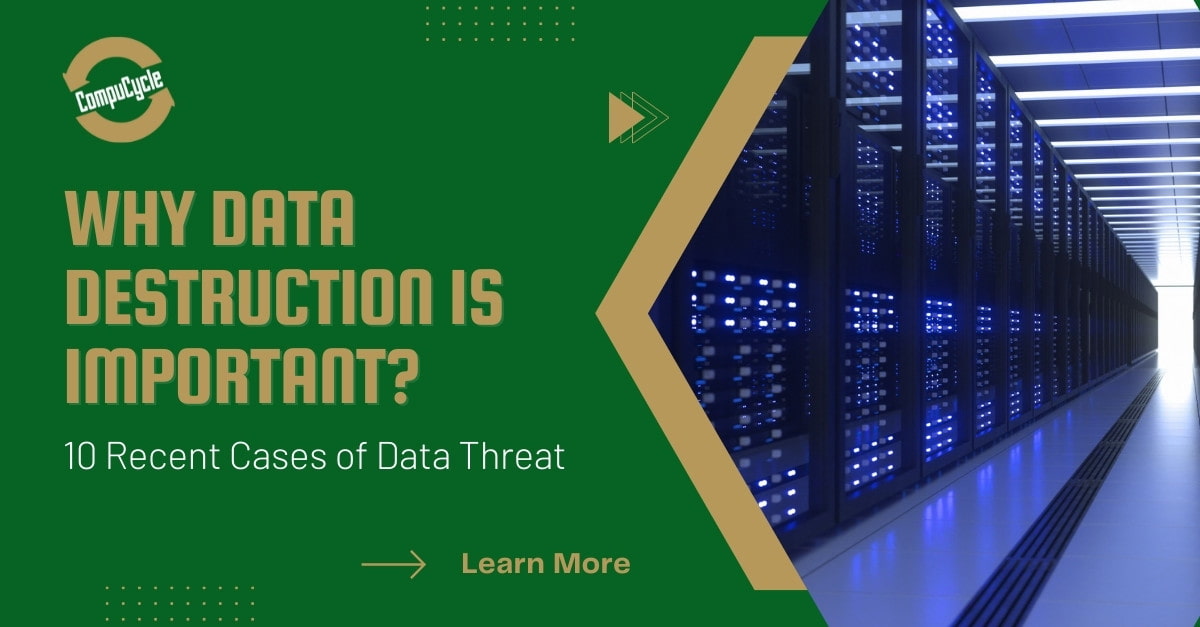Top Tips for Ensuring Secure Data Destruction in Your Cyber Security Plan
Top Tips for Ensuring Secure Data Destruction in Your Cyber Security Plan
Blog Article
The Relevance of Effective Information Destruction Practices in Safeguarding Sensitive Info and Ensuring Computer System Security
In an era where information violations are increasingly usual, the value of efficient data devastation methods can not be overstated. Applying durable data devastation techniques not only minimizes these dangers but additionally aligns with lawful compliance needs, making certain that organizations copyright their track record and foster client trust fund.
Understanding Data Devastation
Recognizing information destruction is vital in today's digital landscape, where delicate information can quickly be compromised. Efficient information damage involves not merely erasing files however making certain that information is irretrievable through comprehensive techniques. This process is important for companies that manage private client info, copyright, or internal records, as any violation can bring about severe monetary and reputational effects.
Data damage includes various strategies, including shredding physical media, degaussing magnetic storage space tools, and using software-based solutions that overwrite data several times. Each technique serves a certain objective and must align with the sensitivity of the info being taken care of. As an example, physical destruction is commonly chosen for hard disks having very personal information, while software program approaches could be adequate for less sensitive information.
In addition, sticking to market requirements and regulations, such as the General Data Security Regulation (GDPR) or the Medical Insurance Mobility and Responsibility Act (HIPAA), is imperative for conformity and to alleviate legal risks. Organizations must create a durable data devastation plan, train workers on finest practices, and routinely examine their treatments to guarantee that all sensitive details is thrown away safely and efficiently.
Risks of Inadequate Practices
Poor data devastation methods expose companies to considerable risks that can have far-ranging effects. When sensitive details is not appropriately dealt with, it continues to be prone to unauthorized accessibility, which can cause information breaches and identification theft. Such cases not only endanger the safety of people however also stain the organization's reputation, leading to a loss of consumer count on and possible financial repercussions.
Furthermore, governing compliance is progressively strict in several sectors. Failure to adhere to information devastation policies can result in hefty penalties and lawsuits against organizations. These fines can stress funds and draw away focus from core company procedures.
In enhancement, the abuse of residual data can cause intellectual building theft or corporate espionage, endangering affordable benefits (data destruction). The influence of poor data damage expands past immediate financial losses; it can likewise cause long-term damage to brand name honesty and market setting

Organizations should recognize that data safety is not only concerning preventing breaches; it likewise incorporates the responsible monitoring of data throughout its lifecycle. Overlooking effective data destruction methods can have tragic implications, emphasizing the need for robust procedures to mitigate these risks.
Finest Practices for Data Destruction
Implementing reliable information devastation methods is necessary for securing sensitive information and maintaining conformity with regulative standards. Organizations should embrace a multi-faceted method to ensure that information is irretrievable, consequently stopping unauthorized accessibility and prospective breaches.
First, information should be classified based on sensitivity, permitting organizations to use proper destruction approaches customized to the level of risk. For digital data, making use of software-based data-wiping tools that follow market standards can properly overwrite existing data. Physical browse around this site devastation techniques, such as shredding or degaussing, are critical for tools that keep sensitive info, ensuring total eradication.
Developing a clear information retention plan is crucial, describing the length of time various kinds of info must be preserved before destruction. Regular audits of data storage space systems are likewise necessary to identify unnecessary or outdated information requiring elimination.
Moreover, training employees on the relevance of data damage this website and the specific procedures to adhere to fosters a culture of safety within the company. Finally, preserving documents of data destruction processes offers accountability and supports conformity with inner policies and exterior policies. By adhering to these best practices, organizations can substantially alleviate the dangers related to information direct exposure.
Legal and Conformity Considerations
Failing to follow these regulations can result in extreme penalties, including considerable penalties and reputational damages. Organizations has to implement a durable data damage policy that straightens with these legal structures and offers clear guidelines on the correct methods of data disposal, whether physical shredding or electronic wiping.
Additionally, preserving paperwork of data destruction activities is necessary for demonstrating conformity throughout audits or assessments. By focusing on lawful and compliance considerations, organizations can improve their data security posture and foster count on with stakeholders and clients, ultimately adding to a much more safe data monitoring environment.
Advantages of Effective Data Damage
Reliable data devastation methods expand past plain conformity; they provide significant advantages to organizations that prioritize them. By making sure that delicate info is irretrievably ruined, companies alleviate the danger try this site of data breaches and the potential financial effects connected with them. This positive technique not only safeguards versus unapproved gain access to however also boosts the total dependability of the company in the eyes of stakeholders and clients.
Applying durable data damage methods, such as physical devastation of storage space gadgets or advanced information wiping techniques, adds to the conditioning of an organization's cybersecurity stance. data destruction. It minimizes the probability of intellectual building burglary and safeguards exclusive info, thereby keeping a competitive side out there

Conclusion
In final thought, efficient data devastation methods are vital for protecting sensitive details and improving overall computer system protection. Eventually, a commitment to durable information destruction approaches cultivates a culture of duty, therefore enhancing an organization's cybersecurity stance and preserving client trust fund.

Report this page